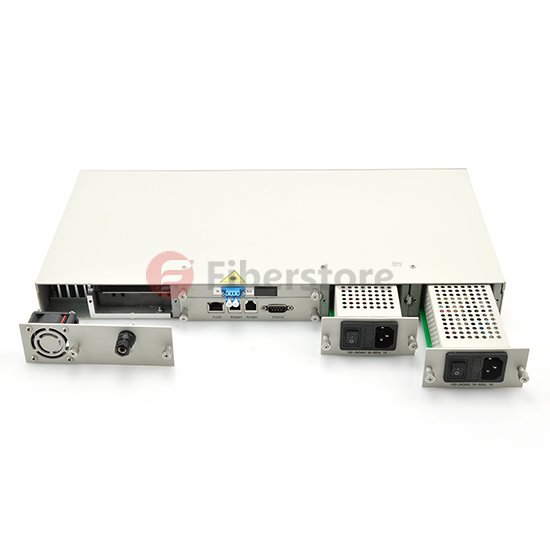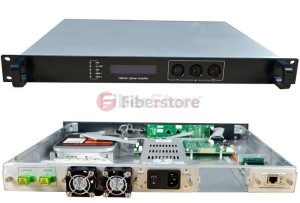As we know, most optical amplifier amplify client light through stimulated emission. An optical amplifier is nothing but a laser without feedback. Optical gain is achieved when the amplifier is pumped optically or electrically to achieved population inversion. Optical amplification depends on:
- Frequency (or wavelength) of incident signal
- Local bean intensity
General applications of optical amplifiers are:
- In-line Amplifier
- Pre-amplifiers
- Power Amplifier
The Figure shows basic operation of optical amplifier
The external pump source energy us absorbed by the electrons in the active medium. The electros shifts to the higher energy level producing population inversion. Photos of incoming signal triggers these excited electros to lower level thourhg a stimulated emission peocess, producing amplified opticla signal.
Breif Introduction
The active medium in an optical fiber amplifier consists of a nominally 10 to 30m length of optical fiber that has been lightly doped with a rare-earth element such as Erbium, Ytterbium, Neodymium or Praseodymium. The host fiber material can be either standard silica, a fluoride-based glass or a multicomponent glass.
The operating regions of these devices depends on the host material and the doping elements. Fluorozirconate glasses doped with P or N are used for operation in the 1300-nm window, since newither of these ions can amplify 1300 nm signals when enbedded in the silica glass.
The most popular material for long haul telecommunication application is a silica fiber doped with Erbium, which is known as Erbium-doped fiber amplifier or EDFA. The operation of an EDFA by itself normally is limited to the 1530 to 1560 nm region.
Features
- Active medium is created by erbium, ytterbium, neodymium, praseodymium
- DFA can pump device at several different wavelength.
- Low coupling loss
- Constant gain.
Today’s Key recommendation product: C-band 40 Channels Booster EDFA for DWDM Networks
The DWDM-EDFA-BA-O23 Booster Amplifier is an easy-to-use and cost-efficient device for DWMD fiber optic link amplification which operates at the transmission side of the link. It is designed to amplify aggregated optic input power for reach extension. Using dual-stage pump laser design and internal Gain Flattening Filter (GFF) to compensate the erbium fiber gain variation, it features high input power, low noise, and up to output power:23dBm. Software control is standard via an RS-232 interface for status monitoring and pump current adjustments.
Features
- Booster Amplifier, carries whole C-Band 1528nm ~ 1561nm of 40 channel on metro DWDM distance extension or single wavelength distance extension application
100GHz channel spacing - input power:-5~+10dBm
- output power:23dBm
- Low Noise Figure: Typical 4.5dB
- High Flatness: Typical 1dB
- 19” 1RU rack enclosure
- SC/UPC, SC/APC, FC/UPC, FC/APC, LC/UPC, LC/APC , ST/UPC and ST/APC connectors are available
- Single or dual 110VAC, 220VAC, 100~240VAC and/or -48VDC power supply
- Reliable 980nm and 1480nm pump lasers
- 10 years of operation life
- 3 years warranty standard
- Compatible with Telecordia GR-1312-CORE
- OEM is available
Fiberstore is a quite professional store to sale EDFA amplifier and splitter, we can have a detailed description and product detail pictures, and the most rewarding part is that Fiberstore has a quite reasonable price, such as the aoove product, it just 3683 dollars at such good quality.



